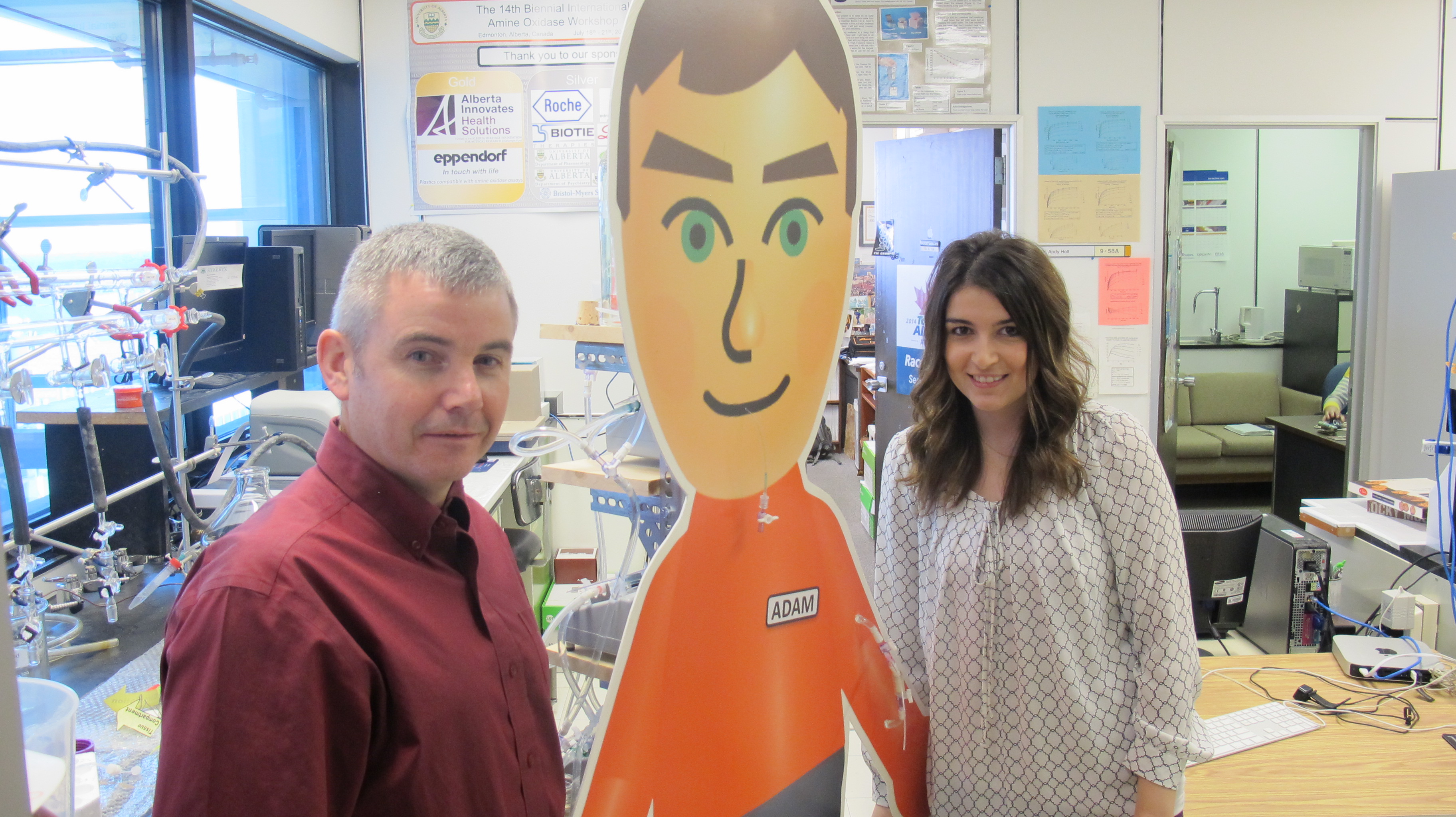
Andrew Holt and Ines Zuna stand next to "ADAM"
Andrew Holt looks at ADAM with great affection and pride in his eyes. In return, ADAM, standing in a corner, stares back with a great loopy grin, seemingly pleased with how far he's come in just a short time.
You'd be forgiven for thinking this was a father-son relationship-ADAM was named after Holt's own son, after all-but instead it's the relationship of a creator and his creation. One that could soon save patients' lives by better educating health-care providers about the drugs they administer and prescribe.
"They [health-care providers] need to have an understanding of how the body deals with drugs and what it does to get rid of them," says Holt, an associate professor in the Faculty of Medicine & Dentistry's Department of Pharmacology. "But many don't. As a result, there are tens of thousands, possibly hundreds of thousands of deaths in North America every year."
"These are often due to errors that result from not comprehending what they are doing in the calculation of drug doses because they don't understand the big picture and the concepts involved."
ADAM, short for Alberta Drug Administration Modeler, began as a seed of an idea in 2014 as Holt contemplated a better way to teach students how drugs move through the body-a notoriously difficult subject for students to comprehend. Holt was determined to create an apparatus that could mimic how the human body handles drugs.
Inspired by a very simplistic model he had read about, Holt, along with master's student Ines Zuna, set out to create the device he envisioned. Six months later, ADAM was born. The completed apparatus accurately demonstrates in a quantitative manner how drugs move through the body by simulating multiple physiological processes, such as how the kidney, liver and heart affect drug distribution and absorption.
"It's better than I ever hoped it would be," says Holt. "With this modeller we can basically change the physiology of the person and mimic a wide variety of different sources of drug behaviours."

Holt and Zuna tested ADAM in pharmacology lab classes in 2015 to determine its effectiveness in helping students understand the subject of pharmacokinetics-or what the body does to a drug. Already they say they have seen a large advance in the students' comprehension.
"There was a significant improvement in student performance after the labs compared to their level of understanding before the labs," says Zuna. "It seems to be achieving the desired outcome."
Based on their results, the pair have obtained a provisional patent on ADAM. They are also working with TEC Edmonton to find partners who can help further refine the apparatus and market it to medical and pharmacy schools across North America. They hope that ADAM could soon have widespread use in medical education, with an end goal of saving lives.
"It's for training future health professionals and it's something that's very likely to increase their understanding in an area where currently many errors are made through lack of understanding, with the end result being that lots of patients are harmed," says Holt.
"ADAM is something that's going to help Canadians."
Funding for the project was provided by the University of Alberta's Teaching and Learning Enhancement Fund, the Canadian Institutes of Health Research and a Faculty of Medicine & Dentistry/AHS Graduate Recruitment Scholarship.